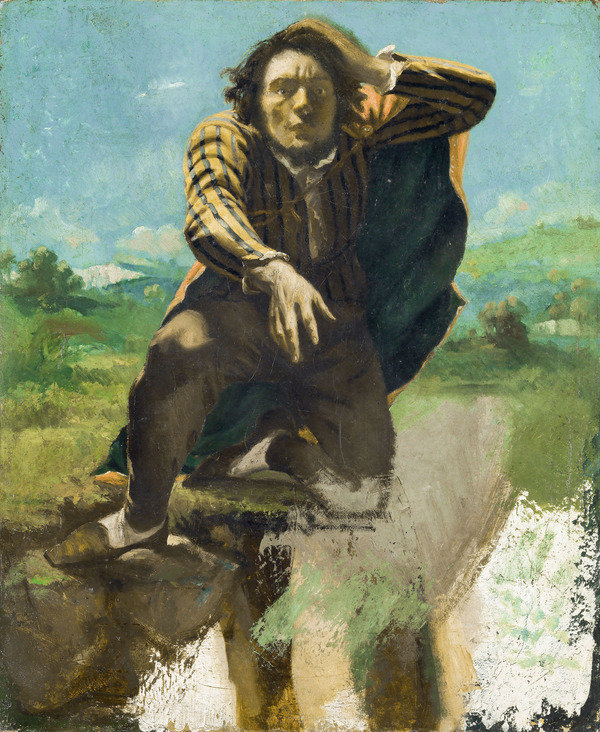Gustave Courbet
dal 6/9/2014 al 17/1/2015
Segnalato da
6/9/2014
Gustave Courbet
Fondation Beyeler, Basel
The exhibition, which includes 50 to 60 works, concentrates on his role as the first avant-garde painter. With his provocative canvases and his emphasis on his individuality as an artist, Courbet developed into a precursor of Modernism who broke with the conventions of traditional academic training.

The Fondation Beyeler devotes many of its exhibitions to artists whose
oeuvre had a determining influence on the development of modern painting.
One such key figure in art history is Gustave Courbet, who was born in
Ornans near Besançon in the French Jura in 1819 and who died in La
Tour-de-Peilz in Switzerland in 1877.
It is 16 years since Courbet's work was last presented in Switzerland. The
exhibition at the Fondation Beyeler, which will include 50 to 60 works,
will concentrate on his role as the first avant-garde painter. With his
provocative canvases and his emphasis on his individuality as an artist,
Courbet developed into a precursor of Modernism who broke with the
conventions of traditional academic training. The exhibition runs from 7
September 2014 to 18 January 2015.
Featuring self-portraits, representations of women and pictures of grottos
and seascapes, the exhibition will highlight Courbet's innovative use of
colour and his strategy of ambiguity. Other themes of the show will be the
break with academic tradition and the development of Realism in art,
Courbet's revolutionary impasto painting technique, which expressed his
individuality as an artist, and his playful treatment of traditional
motifs and symbols.
Courbet's famous painting L'origine du monde will be at the heart of the
exhibition. This will be its first public presentation anywhere in Europe
other than France. Dating from 1866, the painting is the unknown
masterpiece of the 19th century, a work which few saw at the time but
which everyone talked about and which retains its provocativeness even
today.
Depicting the springs, caves, steep limestone cliffs and thick forests
found in the Jura around Ornans where he was born, Courbet's landscapes
are often combined with representations of the female nude. Human beings,
sexuality and untouched nature are united in a fascinating equilibrium.
Other canvases centre on the impenetrable darkness of his Jurassian
mountain caves, showing him to have been a master of suggestion, a true
painter of the invisible. Courbet was an artist who established new
pictorial ideas.
The room entitled "Tracks in the Snow", where Courbet's snowscapes will be
displayed, will show visitors how Courbet, through his painting,
transformed colour into an object. Pastose and expressive, yet of a
dynamic lightness, the colour white becomes snow in those works, seeming
to create its own reality.
The exhibition is a joint project with the Musée d'Art et d'Histoire in
Geneva, which will present Courbet's oeuvre during his exile in
Switzerland. Together, the exhibitions in Riehen/Basel and Geneva will
form a "Saison Courbet" - a "Courbet season" - beginning in the autumn of
2014.
Image: Gustave Courbet, Le Fou de peur (Portrait de l’artiste), ca. 1844/45. The Man Mad with Fear (Le Fou de peur). Oil on paper on canvas, 60.5 x 50.5 cm. The National Museum of Art, Architecture, and Design, Oslo
Further information:
Elena DelCarlo, M.A., Head of PR / Media Relations
Tel. + 41 (0)61 645 97 21,
presse@fondationbeyeler.ch
www.fondationbeyeler.ch
Fondation Beyeler
Beyeler Museum AG, Baselstrasse 77, CH-4125 Riehen, Switzerland
Fondation Beyeler opening hours: 10 am - 6 pm daily, Wednesdays until 8 pm



